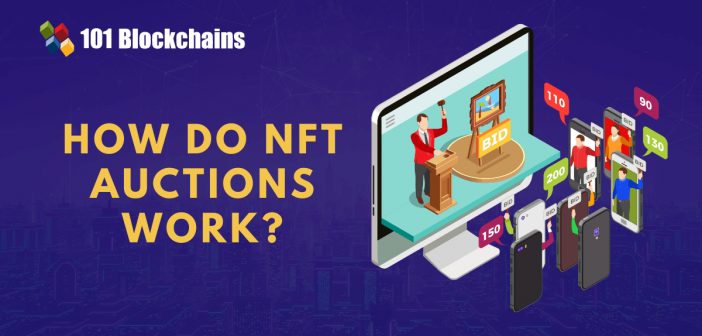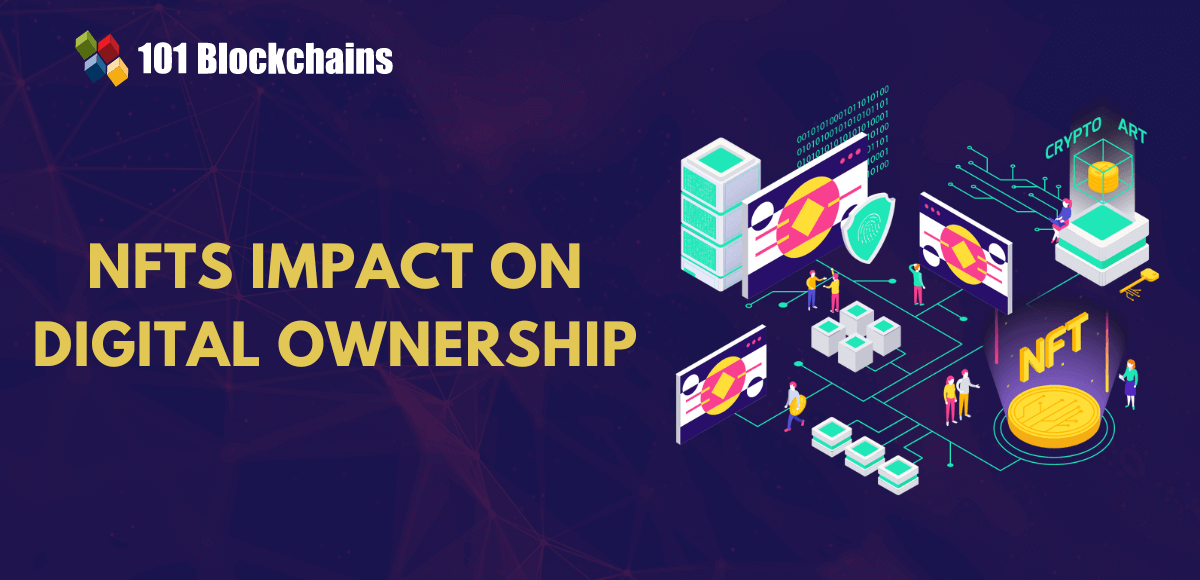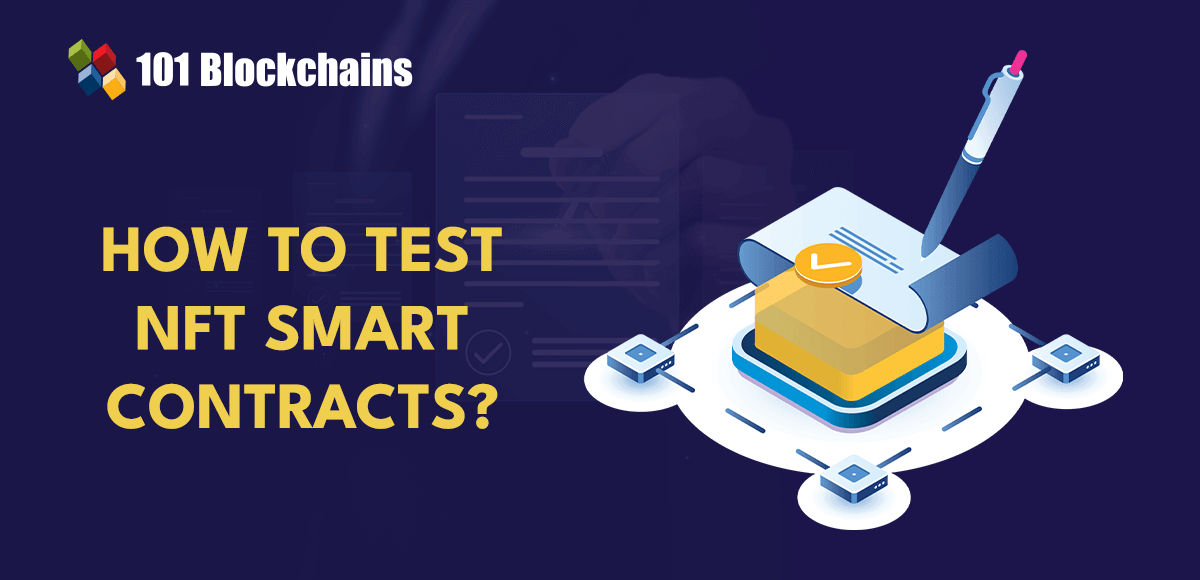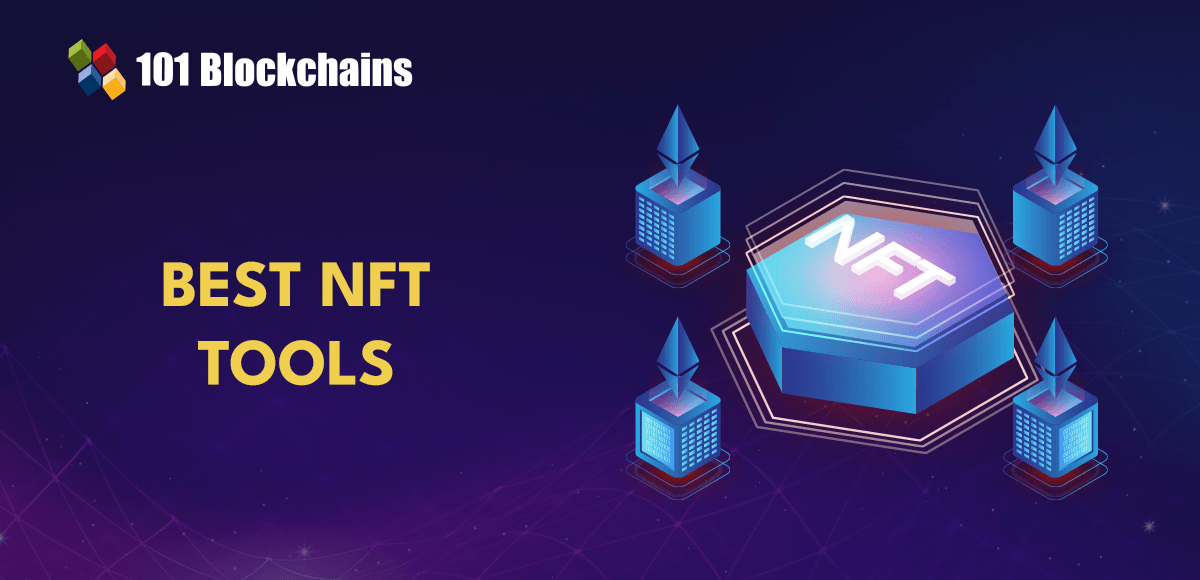Learn how blockchain truly works, master key definitions, and uncover what makes smart contracts so "smart." Dive into the fundamentals, gain valuable insights, and start your blockchain journey today!

- NFT
James Howell
- on January 05, 2023
How Do Auctions Work For NFTs
Non-fungible tokens, or NFTs, are an interesting phenomenon in the domain of decentralized technologies right now. NFTs have offered a new and proven approach to establishing digital proof of ownership for different types of assets. The use cases of NFTs across different sectors, from artwork to sports and finance, have created interest in NFT auctions. Many people wonder about the possible explanations for ‘what is NFT auction‘ and its similarities to general auctions. Considering the value that NFTs fetch, especially with million-dollar NFT sales, auctions seem like the plausible choice for selling NFTs.
Auctions work by putting up an item for sale alongside setting a minimum price and a specific period for sale. Buyers have to place their bids on the concerned item according to the price they want to pay for the item. When the auction ends, the highest bidder could buy the item at the price they bid for it. Does an NFT auction follow a different mechanism? You can find the answer by reflecting on the fundamentals of NFT auctions and how they work. The following post offers a detailed introduction to NFT auctions and finds better chances of winning the auctions.
Aspiring to Become a Certified NFT Expert? Enroll in Certified NFT Professional (CNFTP) Course Now!
What is NFT Auction?
The first question in any guide to NFT bidding or auctions would focus on its definition. Interestingly, there is no difference between an NFT auction and a regular auction. NFT auctions are a sale process where owners or developers list specifically non-fungible tokens for sale to interested buyers. Subsequently, buyers could place their bids on the auction according to the price at which they want to buy the NFT. It is important to ensure that the bid is higher than the minimum price established by the seller. When the auction ends, the listed NFT will be sold to the highest bidder.
Types of NFT Auction
The interest in the NFT auction process has been climbing steadily as new NFTs and collections make their mark in the industry. Many of you must have doubts about the working of non-fungible token auctions and how they serve credible value advantages. The best way to understand the working of NFT auctions is to focus on identifying the different types of NFT auctions.
The two most common NFT auctions are Timed Auctions and Dutch Auctions. You can find reliable explanations for ‘how do NFT auctions work‘ by reflecting on the details of these two variants of NFT auctions.
- Timed auctions, also referred to as English auctions, are the most common auction model followed worldwide. The time auction method focuses on the concept of the highest bidders receiving the privilege of purchasing NFTs on auction. Buyers could make offers on the fixed-price listing, and the seller would accept the highest bid from the lot.
- The response to ‘how does NFT bidding work‘ would also point to the Dutch auction model. The Dutch auction model for non-fungible tokens works differently. In a Dutch auction, the price of listed NFT declines gradually from the opening bid. It is important to note that Dutch auctions start with deliberately overpriced opening bids, which can decline gradually.
Another notable variant of NFT auctions refers to the auction by participant admission. Such NFT auctions work based on the participation of bidders. You can find two distinct types of NFT auctions based on admission for participants, such as open and closed auctions. Open auctions imply that any user on the platform could participate in the auction, while closed auctions involve a whitelist. Closed auctions can also involve invitations for users to participate in the auction.
Want to get an in-depth understanding of non-fungible tokens (NFTs)? Enroll now in the NFT Fundamentals Course.
Working on NFT Auctions
The introduction to NFT auctions would emphasize profoundly how they work. You can find answers to “How does auction work in NFT?” by identifying the essential highlights. First, you need an NFT auction site or NFT marketplace to conduct the auction. NFT auction sites are generally online marketplaces where you can buy or sell NFT using cryptocurrencies. Some popular NFT marketplaces for auctions include OpenSea, Nifty Gateway, Rarible, Foundation, SuperRare, and others.
Buyers need to understand the mechanism of NFT auctions to ensure they get the best deals. Before participating in one, you must notify the implications of the reserve price in an NFT auction. The Reserve price is the minimum ETH sellers would be prepared to take for their NFT. Buyers can notice the reserve price of an NFT on the concerned marketplace and cannot bid lower than the reserve pricing. You can also doubt “What can I auction on NFT?” in the working of NFT auctions. Sellers can list any NFT for an auction. In addition, you must also notice that the auction would add a 15% service fee to the final NFT selling price. The 15% service fee is important while setting up the reserve price.
Upon meeting the reserve price of an NFT, the platform starts a 24-hour countdown, implying the automatic closure of the auction after the period. Interestingly, the countdown timer would extend by 15 to 20 minutes for offers placed in the last minutes of the auction. The extension would continue until the auction does not receive any more bids. The common reference for understanding ‘how do NFT auctions work‘ would focus on the timed auction model. Therefore, collectors could place bids higher than or equal to the reserve or minimum price for NFT. Once the auction receives the first bid, the platform will start the 24-hour timed auction. On top of it, the subsequent bids should be around 10% higher than the existing bid or 0.1 ETH, with preferences for a lower alternative.
Timed auctions can generate hype through social media to encourage more bids in the auction. If the auction does not receive any bids after the first bid at the reserve amount, the first bidder can buy the NFT. In addition, extensions could continue if the auction does not receive any bids in the final 15 minutes. The extension of 15 minutes for each bid in the auction offers a fair chance for bidding to every buyer. Most importantly, the extensions could help the listed NFT achieve its full worth in the market.
Start learning Non-Fungible Token with World’s first NFT Skill Path with quality resources tailored by industry experts Now!
How to Participate in an NFT Auction?
The basic explanation for ‘what is NFT auction‘ provides a good reason to seek auctions for purchasing your favorite NFTs. You can participate in an NFT auction as a bidder by following a few simple steps.
- Start by connecting your crypto wallet with NFT support.
- Now, you can search for NFTs on different NFT marketplaces to find the NFTs you want.
- Use the ‘Browse’ functionality on the NFT marketplace and view the details of all existing auctions. You can find information about existing auctions through the ‘Sale Type’ drop-down, which helps you choose the ‘Auction’ option.
- Subsequently, you could choose the NFT for which you want to submit the bid.
- During the NFT auction process, you can find details of the existing bid and remaining time in the auction on the right side of the NFT. In addition, you can also learn other significant information about NFT.
- Place your bid by citing an amount higher than the existing bid, then click on the ‘Place Bid’ option.
- Make sure that you sign the transaction and confirm the bid.
- Link your NFT wallet and complete the bid transaction. Upon acceptance of your bid, the transaction is completed, and you can receive the concerned NFT in your wallet.
Get familiar with the terms related to non-fungible token with Non-Fungible Token Flashcards
How to List NFTs for Auction?
The discussion on NFT auctions should also highlight questions like ‘What can I auction on NFT?‘ for sellers. You can list newly minted NFTs or the ones you have in your wallet for auctions. Therefore, you can start an NFT auction by signing up for an NFT marketplace and connecting your wallet. You can use the following simple steps for selling your NFTs in an auction without giving in to a fixed-price model.
- Begin the auction by choosing the ‘List your NFT’ option.
- You can start NFT bidding by confirming the transaction for necessary charges through your wallet.
- Sellers can use Etherscan to monitor the time required for confirming transactions through the ‘View on Etherscan’ option. Etherscan helps you monitor all transactions on the Ethereum blockchain.
Now, all you need to do is wait for a buyer to place their bids. When the auction closes, sellers will receive notification of the highest bidder, and you can complete the auction.
Excited to develop an in-depth understanding of solidity’s best practices and the tools needed for developing and testing an NFT marketplace, Enroll now in the NFT Development Course
Popular NFT Auctions
The final highlight in a discussion about “How does auction work in NFT?” would point towards the most popular NFT auctions. One of the most notable NFT auctions would refer to the “Everydays: The First 5000 Days” artwork NFT by Beeple. It fetched around $69 million in an auction in 2021. This auction shifted the whole world’s attention to non-fungible tokens and their potential. Interestingly, Beeple also auctioned off many other NFTs, such as The First Drop and Ocean Front. The auctions fetched $6.6 million and $6 million, respectively, and strengthened the position of Beeple as an NFT artist.
Want to know about the key processes of NFTs? Check the presentation Now on How NFT Works
Final Words
The introductory overview of NFT auctions offers comprehensive guidance on how NFT auctions work. With a basic knowledge of the NFT auction process, you can find effective guidance for bidding on NFTs. At the same time, you can also find the best way to achieve the maximum market value for your NFTs. Buyers and sellers can access many promising benefits with awareness regarding the implications of NFT auctions.
The details about ‘how does NFT bidding work‘ would also point to the implications of the reserve price. In addition, sellers must also take note of the transaction fee they have to pay for listing their NFTs. As you learn more about non-fungible tokens and their value as digital assets for the future, NFT auctions might emerge as a priority. Learn more about non-fungible tokens, how they work, and the methods to create one with reliable training resources now.
*Disclaimer: The article should not be taken as, and is not intended to provide any investment advice. Claims made in this article do not constitute investment advice and should not be taken as such. 101 Blockchains shall not be responsible for any loss sustained by any person who relies on this article. Do your own research!





